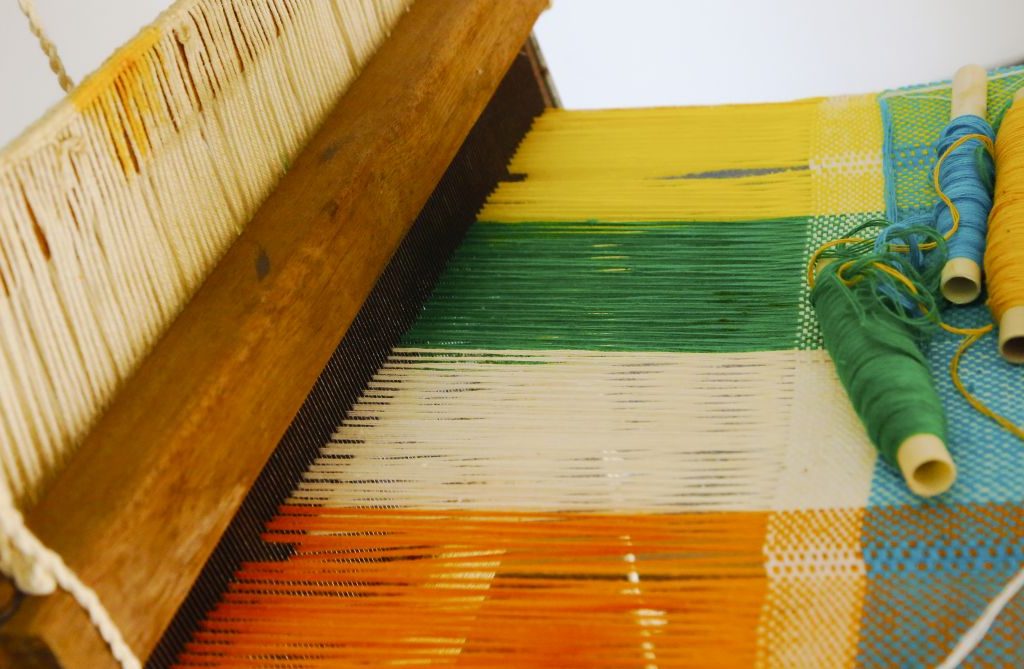By Harsh

Handloom is an ancient industry in India whose golden times are now cast away into the dust somewhere in the Indian cultural history, with the dawn of the globalized economic sector. Handlooms, now the cultural dinosaurs, are considered irrelevant, overlooking the fact that Indian handlooms are not just the largest source of employment and income generation after agriculture but also the one area of skill, creativity and expertise where India is way ahead of the world.
Our infatuation towards power looms has proliferated over the years manifesting in the infidelity towards the handloom artistic work. The argument discarding handlooms is quite absurd, as handloom creates distinctive weaves and designs that no power loom can replicate. Handloom not just represents artwork, it stands witness to the sweat and blood of every weaver’s artistry. With the strength of their backs, tirelessly working day in and day out, handlooms have worked their way into the cultural history of India.
I would shed light on the unique quality of handlooms and their influence on our personal livelihoods over time, using an anecdote. At one Dastkar bazaar, someone asked an 80-year old Manipuri woman wearing a handloom, if she did not feel cold. She replied, “I have spun this out of my own hands. My mother and my sister have woven it. My mother learnt it from her mother and her mother from hers and so on. The warmth of so many hands has gone into this. When generations of women enfold me, how can I be cold?”

When we talk about handlooms, the first thing which strikes our mind is Khadi, which is one word that brings forth the image of Mahatma Gandhi and the Swadeshi Movement he led. Khadi is a term used for fabrics that are hand spun and hand woven, usually from cotton fibre. Handlooms have been around for many years, thus making handloom an ancient craft. The Indus Valley Civilisation, around 2800B.C., had a well developed tradition of textiles. Discovery of terracotta spindle whorls for spinning and yarn bone tools for weaving are evidence supporting such claims. The most prominent figurine is of the Mohenjo-Daro Priest King sculpture, shown wearing a cloak with patterns that are still in use in modern Sindh, Gujarat and Rajasthan.
Stories about the fine translucent quality of muslin are commonplace. Once Aurangzeb admonished his daughter for wearing a transparent dress. Princess Zeb-un-Nisa replied, to the astonishment of Aurangzeb, by saying that she was wearing seven layers of muslin. Since Independence, the journey of handloom has been standing at the crossroads, maintaining a balance between tradition and modernity.
Over the past few years, handlooms as the ‘new trend’ has been surfacing in the stylish corridors of the fashion world. Various handloom fashion shows give the impression as if handloom weavers have achieved their zenith, as if designs are going through a revolution, but the reality is quite pulverizing. On the brighter side, certainly, there is a genuine handloom resurrection, led by a small section of enthusiastic and talented handloom designers and experts. Due to involvement of extraordinary research for fabric quality, yarn and colours, the work is dreary and tedious. Some entrepreneurs have the tendency to create artwork in proportion to popularity. For instance, Jamdani looms are the most widespread now in West Bengal replacing Kutchi Ajrakh printing, which was famous at one point of time. The dichotomy in this scenario is bizarre and contradictory. On one hand, there is a surge of handloom fashion and on the other hand, there is a persistent lament that the younger generation weavers are deserting family looms due to lack of incentives. How can both – the hype and the growing lack of work and worth be true?
Given the relentless nature of mechanisation and modernisation, the handloom sector is undergoing changes that are impacting the livelihood of the weavers. My view hopes to bring a novel perspective on handloom as an appealing craft, as I hope it is not all sour for handloom. The great finesse and forbearance of handloom is still worthy of much appreciation in our modern times.

